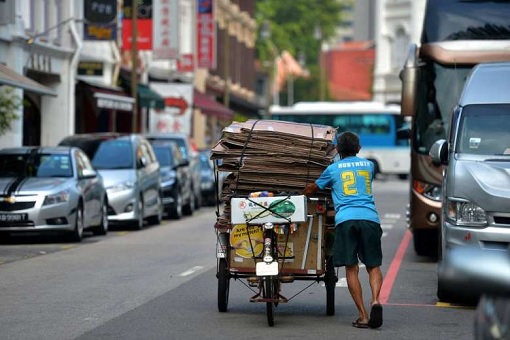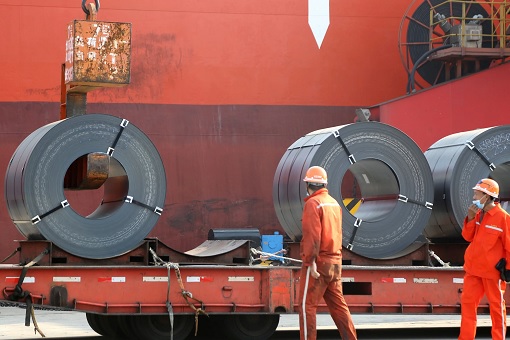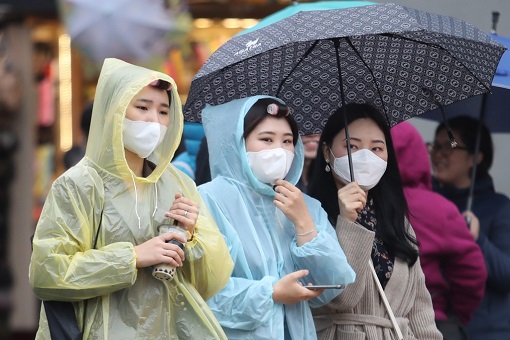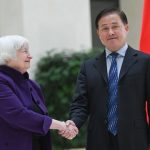No one is spared from the notorious Coronavirus. As the world still struggles to contain the pandemic, the ultimate trail of destruction to be left by the virus is unimaginable. The World Bank has a rough idea. According to its economic update on Monday, the international financial institution said that Asia is projected to grow by only 0.9% – the lowest rate since 1967.
While the rest of the East Asia and Pacific region were projected to see a 3.5% contraction, growth in China was expected at 2%. Even then, the Chinese were able to grow in positive territory due to government spending and strong exports, not to mention low rate of Coronavirus infections since March. What does this mean to a layman?
Essentially, it means up to 38 million people are set to be pushed back into poverty in the region alone, including 33 million people who would have otherwise escaped poverty. That poverty line is defined as income of US$5.50 (£4.30; RM30) a day. It means not only Covid-19 is keeping people in poverty, but also creating a class of “new poor”.

The pandemic has forced governments in the region to put up efforts to contain the spread of the virus, leading to “significant restriction” of economic activity. “These domestic difficulties were compounded by the pandemic-induced global recession, which hit EAP (East Asia and Pacific) economies that rely on trade and tourism,” – said the World Bank.
Even though the EAP region has to date suffered less from the disease (in terms of deaths and infections) than other parts of the world, the Covid-19 pandemic nevertheless has delivered a “triple shock” to the developing East Asia and Pacific region – the pandemic itself, the economic impact of containment measures, and reverberations from the global recession.
While the EAP has done better than other regions in containment of the disease, unfortunately, the East Asia and Pacific region’s economy are heavily dependent on the rest of the world. As global economic activity gradually resumes, tourism will remain depressed. Even though short-term capital has returned to the region, global uncertainty still holds back both domestic and foreign investments.

The Washington, DC-based bank also said that countries in the region have little choice but to pursue fiscal reform to mobilise revenue in response to the economic and financial impact from the pandemic. Countries with well-functioning social protection programs and good implementation infrastructure would be to scale up more quickly during the current pandemic.
The report said in general, governments in the region have on average committed nearly 5% of their GDP to improve health systems, help households to smooth consumption and help firms to avoid bankruptcy. However, several countries found it hard to scale up their narrow social protection programs, on which they previously spent less than 1% of GDP.
Even in the case where countries could pump money to prop up economy temporarily, the pandemic will have a lasting impact on longer-term growth by hurting investment, human capital, and productivity. Public and private debts, along with worsening bank balance sheets and increased uncertainty, would hinder investment and pose a risk to economic stability.

Like it or not, governments in the developing East Asia and Pacific region are facing difficult trade-offs. Any excessive Coronavirus economic stimulus package or relief may leave a government with huge debts, making it less-equipped to invest in infrastructure and hence growth. Worse, if the relief is not distributed smartly, the burden of public debt will trigger new direct or indirect taxes.
Governments in the region must implement the correct reforms, including fiscal and trade reforms in addition to social and human capital protection, in mitigating the immediate impact of the crisis. If left un-remedied, the consequences of the pandemic could reduce Asia’s growth over the next decade by 1% point – every year.
Other Articles That May Interest You …
- History’s Shortest Bear Market – But How Can The Bull Returns So Fast Despite Ongoing Coronavirus & Struggling Businesses?
- Russia Reveals “Sputnik V” – But Scientists Condemn The Coronavirus Vaccine As Risky, Dangerous & Could Backfire
- Covid-19 Third Wave – The 3 Deadly Mistakes From Hong Kong That Every Country Should Avoid
- Bad News For Economy – IMF Slashes Growth Again, U.S. Hits Record 45,000 Covid-19 Cases & Jobless Claims Continue
- Lawsuits For Trillions Of Dollars Against China Over Spread Of Coronavirus – Here’s Why It’s A Waste Of Time
- IMF – The “Great Lockdown” Is Set To Triggers The World’s Worst Recession Since The 1929 Great Depression
- 3 Coronavirus Variants Discovered – Surprisingly, “Type-A” Found In Americans, Wuhan’s Type-B And Type-C In Europe
- The World Is Working On 20 Coronavirus Vaccines – But It Could Take Up To 18 Months
- China Appears To Be Winning The Coronavirus War, And Other Countries Are Studying How The Chinese Did It
- Arabs Conspiracy Theories – Coronavirus Is The U.S. & Israel Biological Warfare To Cripple China’s Economy & Reputation

|
|
September 29th, 2020 by financetwitter
|


|

|

|

|

|

|




























Comments
Add your comment now.
Leave a Reply